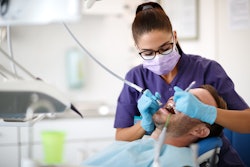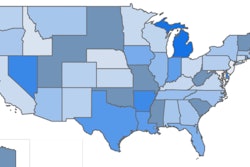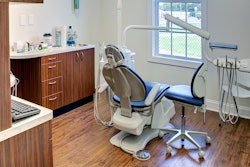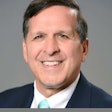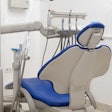
A 22% pay gap exists between male and female dentists in the U.S., but why women continue to get shortchanged cannot be fully explained, according to a large study published on January 5 in the Journal of the American Dental Association.
Race, ethnicity, bilingualism, employment factors -- including employee versus owner status -- and household characteristics -- including spouse or partner occupation -- explain only about 27% of the income gap between men and women dentists, the authors wrote.
"The income gap between sexes, although reduced over time, is now less explainable than in the past," wrote the authors, led by Dr. Simona Surdu, PhD, co-deputy director of the Oral Health Workforce Research Center at the State University of New York at Albany (SUNY) in Rensselaer.
In 1990, women dentists earned, on average, $78,130 less than their male counterparts. By 2010, the income gap dropped to $64,717. Though an income gap persists, it's slightly better.
In December 2021, researchers from SUNY's Oral Health Workforce Research Center revealed that female dentists reported annual incomes 25% lower than those of male dentists. Female dentists reported mean annual incomes of $157,509, while men reported incomes of $210,097.
To get an update on the income gap between men and women in dentistry, a cross-sectional study was conducted using data from the U.S. Census Bureau's five-year American Community Survey (2014-2018). Data for 143,671 dentists were analyzed using descriptive statistics and regression analysis. Of the total number of dentists, 44,385 were women and 99,286 were men.
On average, male dentists earned a higher mean income of $211,398, which was $51,784 more than the mean incomes of $159,614 that were reported by female dentists. Adjusted estimates indicated that male dentists earned 22% more than female dentists (risk ratio, 1.22; 95% confidence interval [CI], 1.15 to 1.29), according to the study.
Furthermore, only about 27% of the income gap between male and female dentists can be explained by differences in observable household, personal, and employment characteristics. Characteristics significantly associated with higher incomes for male dentists compared to female dentists included the following:
- Race and ethnicity (p value = .012)
- Hours worked per week (p < .001)
- Partner's or spouse's occupation and education level (p = .010)
- Employment status (p = .005)
- Bilingualism (p = .024)
- Place of work (p < .001)
- Weeks worked per year (p = .030)
Nevertheless, the study was not without limitations, including that what effect one's dental specialty had on the income gap could not be evaluated. The survey data did not include specialty data. Specialty was a critical determinant in physicians' income disparities; however, it's likely not as important in dentistry because most dentists are in general practice, the authors wrote.
Although this study tries to highlight some characteristics and choices of dentists that affect their income, additional factors should be explored to further reduce earning gaps, the authors wrote.
"Both the explained and unexplained variations in income between males and females are concerning, but the portion of the gap that is explained by the personal characteristics of dentists is especially disquieting," Surdu and colleagues wrote.





